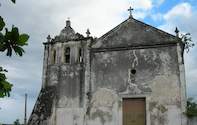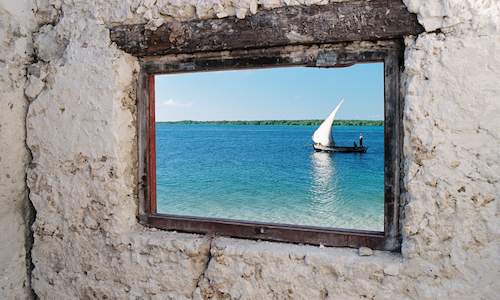
For about a millennium Ibo Island was an important trading bead on the necklace of the Bahr-el-Zanj, as the Swahili coast of tropical east Africa is known.
But unlike most of the coast which is dominated by Arabic influence (think of Zanzibar and Lamu), Ibo became part of the Indian province of Goa and so the Indian influence. is stronger here than elsewhere in east Africa. The architecture too is a rather unique mix of lndian and European colonial style with an added touch of Arabic.
The saddest part of the story is that Ibo was a major slave trading entrepot, which lasted well into the 1900s under Portuguese domination. Arabs might have started the ugly process but it was the French who had the biggest impact, exporting slaves from here to all their possessions in the Indian Ocean. Ibo Island Lodge owner, Kevin Record, told us there is a place in Madagascar where they still speak the local Ibo dialect.
After what might be termed a relatively prosperous 500-year trading period dominated by Indians and Omani Arabs, the Portuguese arrived in the early 1500s. They quickly took brutal control of what was to become the colony of Portuguese East Africa - today's Mozambique.
As they were squeezed out of their homes and communities elsewhere, Swahili and Indian traders fled to Ibo. In the 1700s the Portuguese became wise to this migration and took control of the small island. The first dung they did was to build the strategic five-star shaped fort that remains a focal point of the island today.
While the town of Pemba rose in importance as a large boat harbour in me latter half of the 20th century, so the fortunes of Ibo waned. Unfortunately, it was not able to avoid the scarring left by the decades of civil war both before and after the departure of the Portuguese. The fort was apparently the scene of some brutal atrocities of that period, and even today it has a creepy atmosphere about it.
Through all of this, however, one silver thread remains intact. They are to Ibo what the Italian families are to Brooklyn, and they seem to control the comings and goings with invisible power. Some call them the mafia, others say it is voodoo. Whatever it is it has a shiny lining and is truly beautiful. They are the silversmiths and they work as a kind of local, secretive guild that would impress even the Illuminati.
For centuries they have used coins, melted down into silver wire and then worked into the finest filigree you are ever likely to see. Of course, silver coins are something of a rarity now, so you may just as well see among their-bullion Chinese coins from 1866 as a 1986 South African 20-cent coin. The tradition can be dated back to around the year 1200 when Arab traders first had a cultural influence on the island. Since then the skill has been handed down from father to son, and today there are around 40 silversmiths still producing their fabulous wares.
Life on the island is still fairly traditional. The women of the region paint themselves with mussiro (a white or yellow paste), and wear thick, silver mkufu necklaces, kankana (mist bracelets) and maluwata (ankle bracelets). Men will wear rings (mea) and also mkcfu in order to demonstrate their status.
In a region of famous island resorts, Ibo is not generally well known. To most of the travellers who have found it, it is a paradise the kind of which is really hard to find in a fast-homogenising world.
By David Bristow

 This 6-Day Ibo Island Holiday Package will suit a variety of guests including families and honeymooners. Escape to a resort in the Quirimbas...
This 6-Day Ibo Island Holiday Package will suit a variety of guests including families and honeymooners. Escape to a resort in the Quirimbas... Idyllically set on the Indian Ocean paradise of Ibo Island, this Mozambique lodge is situated north of Pemba in the beautiful Quirimbas Arch...
Idyllically set on the Indian Ocean paradise of Ibo Island, this Mozambique lodge is situated north of Pemba in the beautiful Quirimbas Arch...